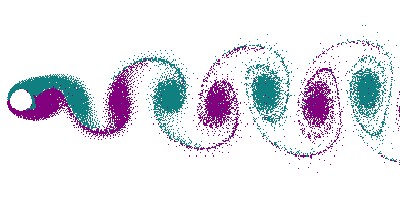Magic works through transmutation circles infused with sigils that both manifest from a person's mind. The individual focuses their Anima, or life force, through these circles in order to create magical spells. Each sigil has Anima requirements, and Anima must run through them at a certain pace in order to function.
A spell that has a total cost of 1000 can be done by a spellcaster born with the same amount of anima, but another individual with 200 anima would need 4 other spellcasters to help complete the spell. Different combinations will work as long as it adds up to 1000. This presents a number of problems for the latter group, as it comes with certain requirements that must be met.
Each spellcaster must perform the spell accurately and in sync with each other, or the spell won't work. This makes it more difficult to perform the more casters their are.
These casters must be connected to each other through an object made specifically for this purpose, which links the transmutation circles together to form one large circle.
Anima from the casters build up a lot of heat, which can be fatal to the participants. Therefore, this object that links them together must double as a heat sink, which absorbs the excess heat from the casters, similar to a running computer.
This is the conundrum. A caster that has the exact amount or more of anima that the spell requires doesn't have to worry about heat exhaustion or burning out. However, multiple casters combining their anima to meet the requirements need a specialized heat sink to avoid burning to a crisp. Why would this be the case?

